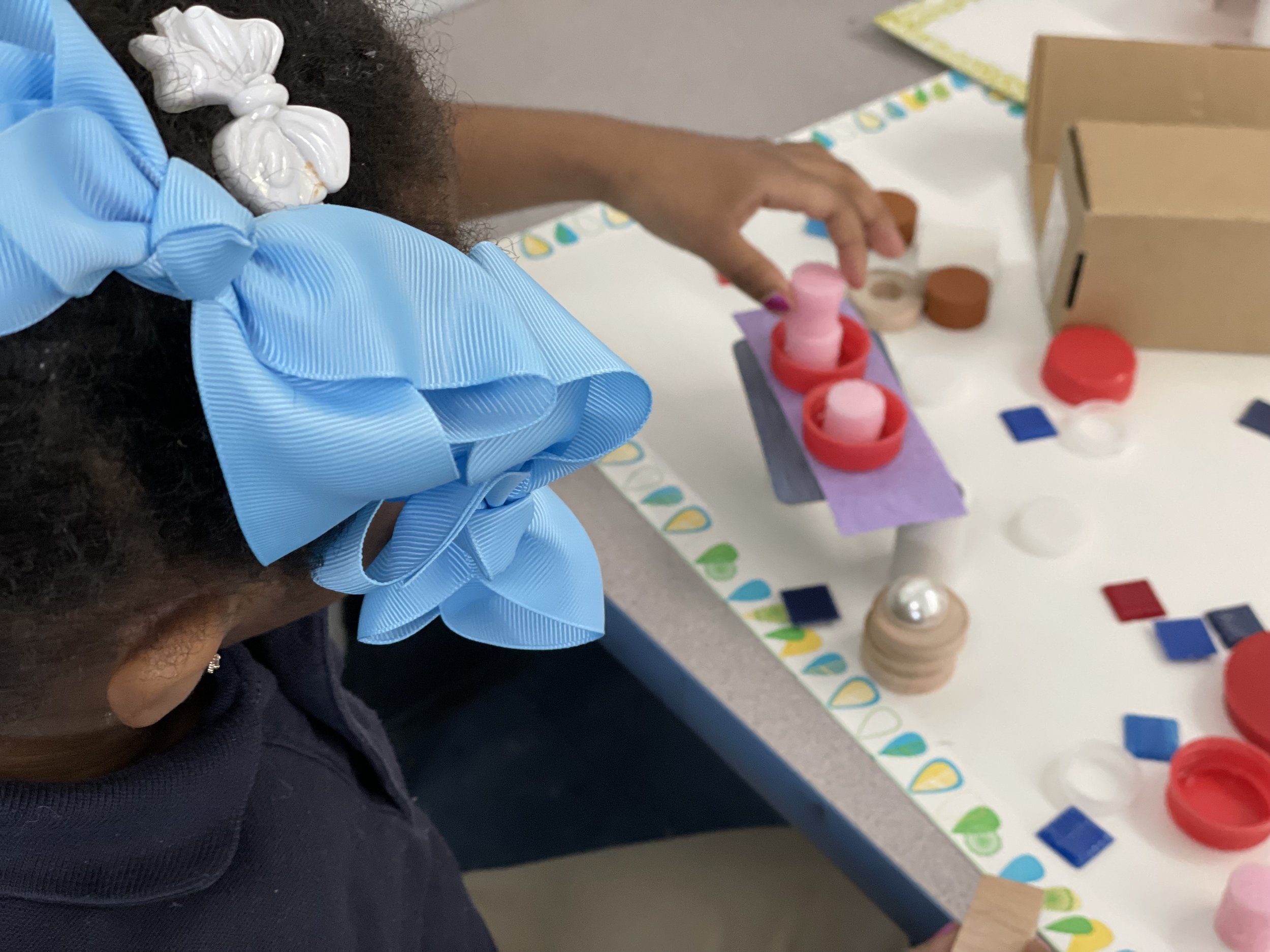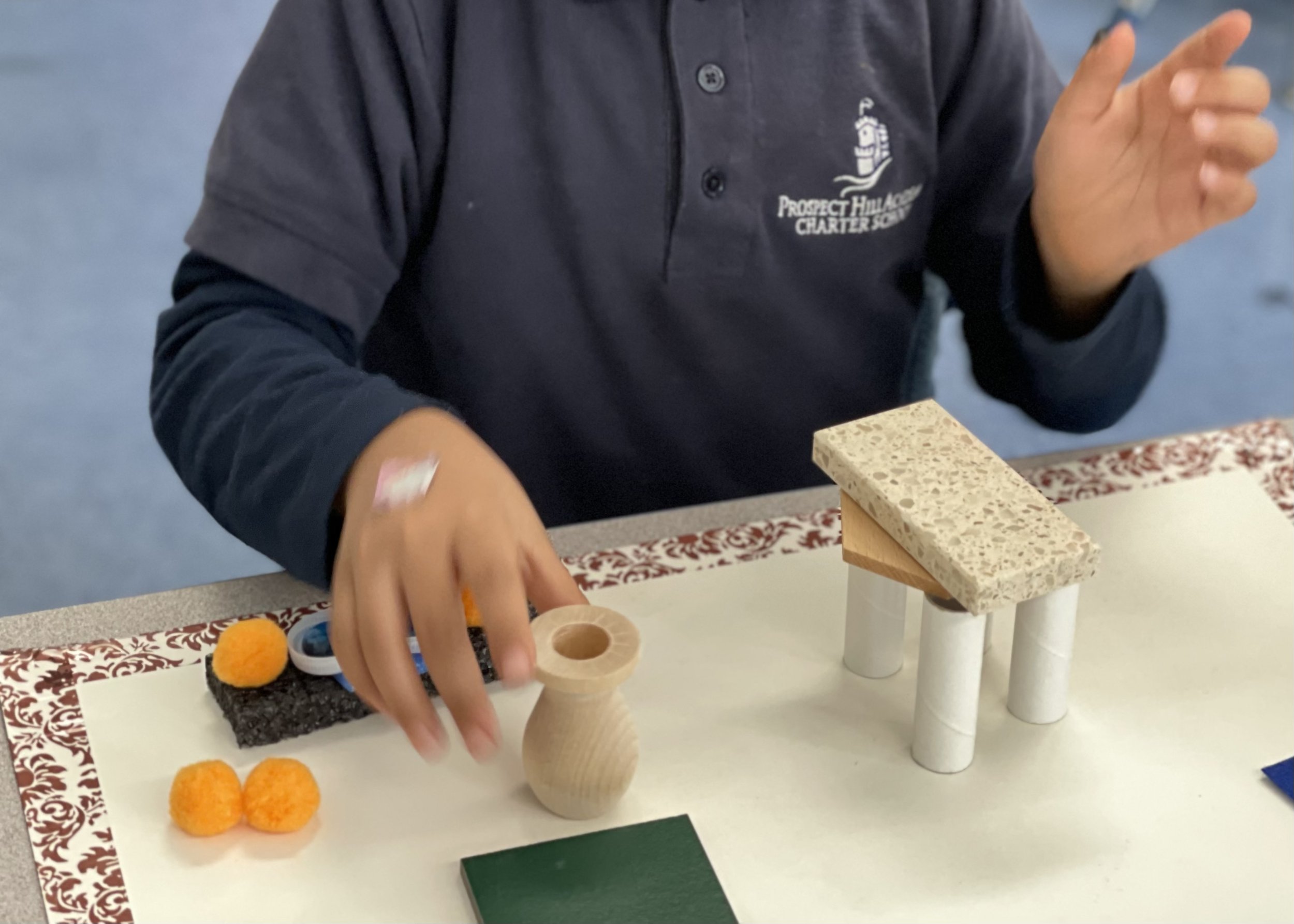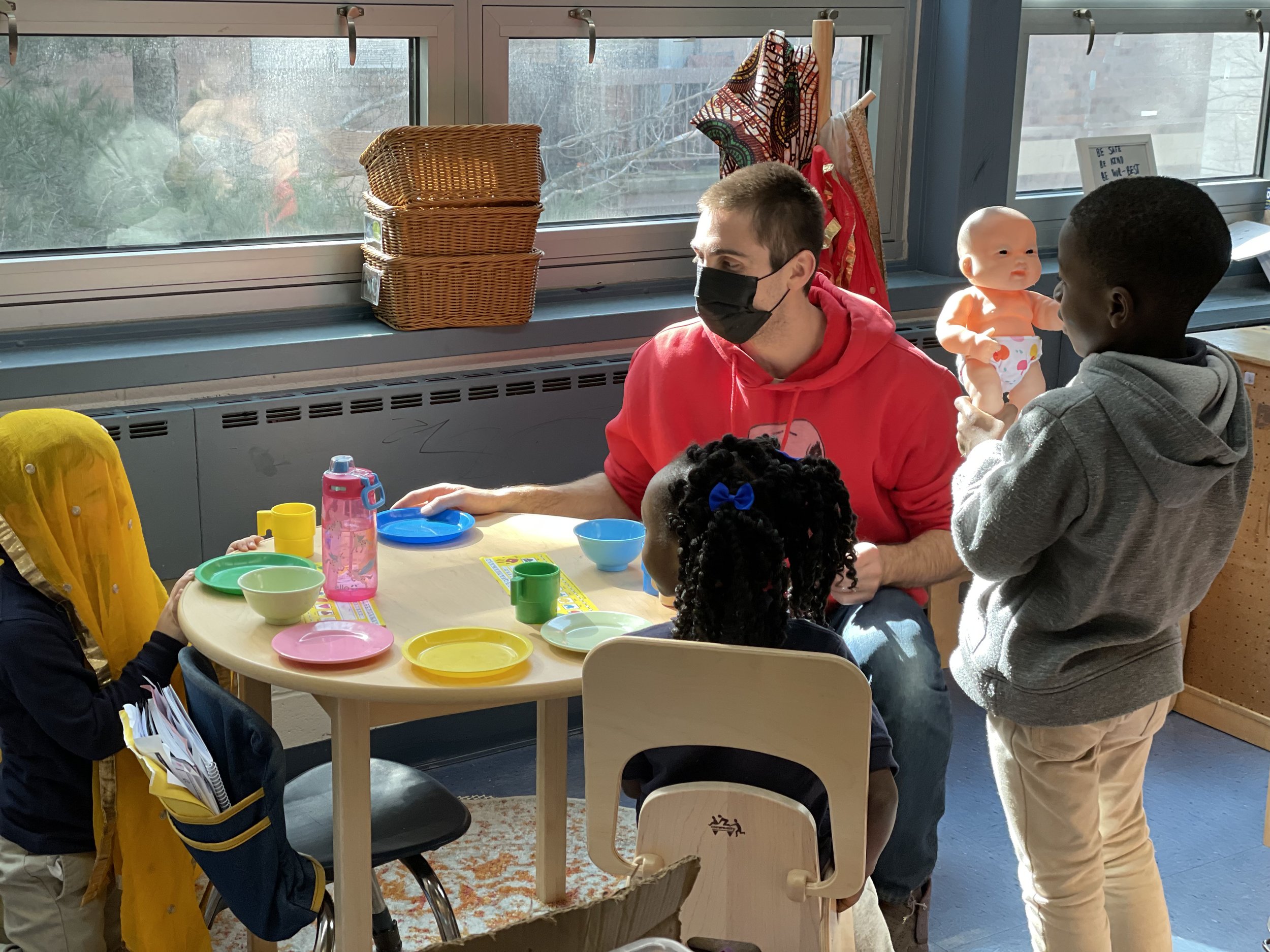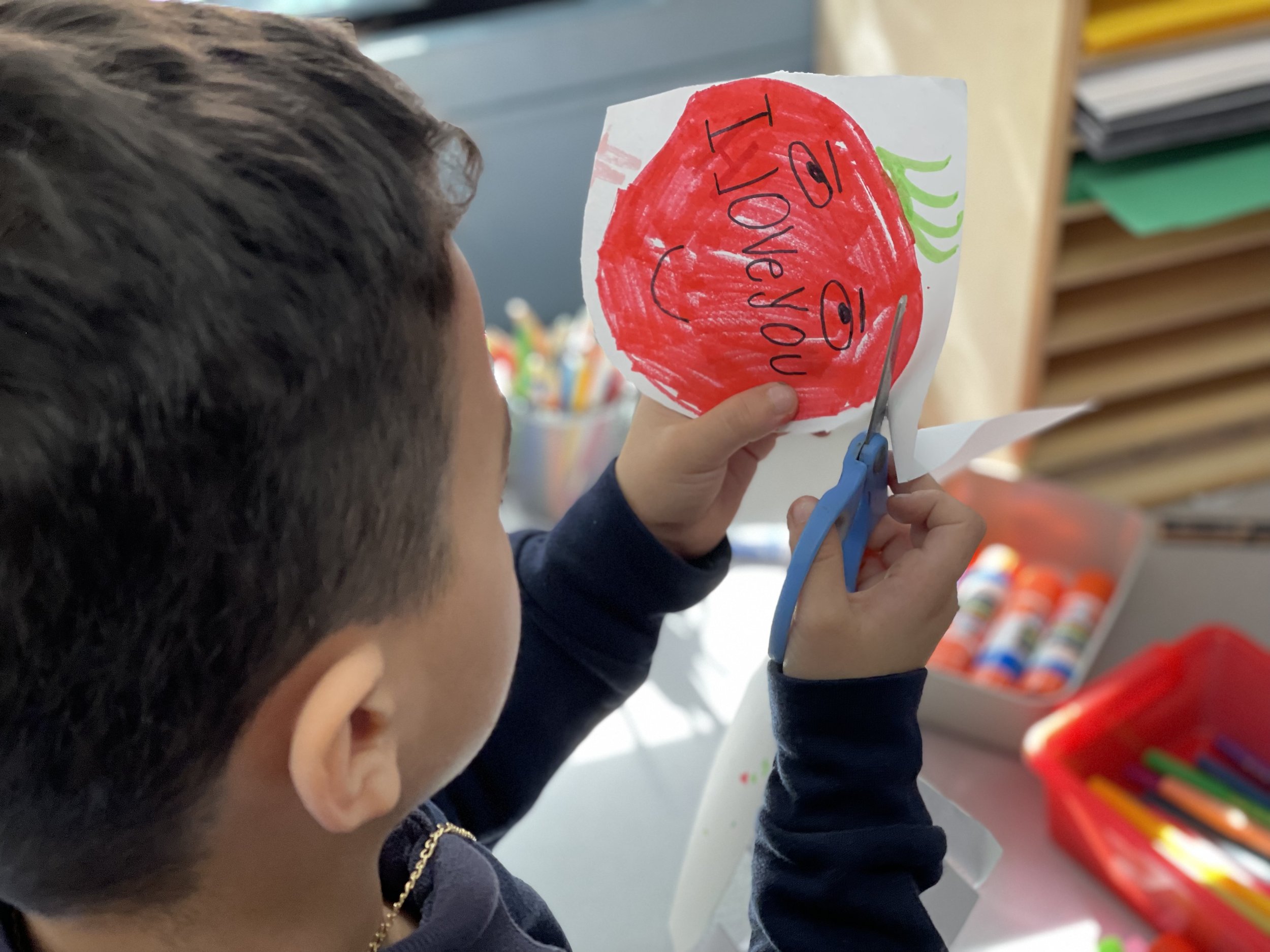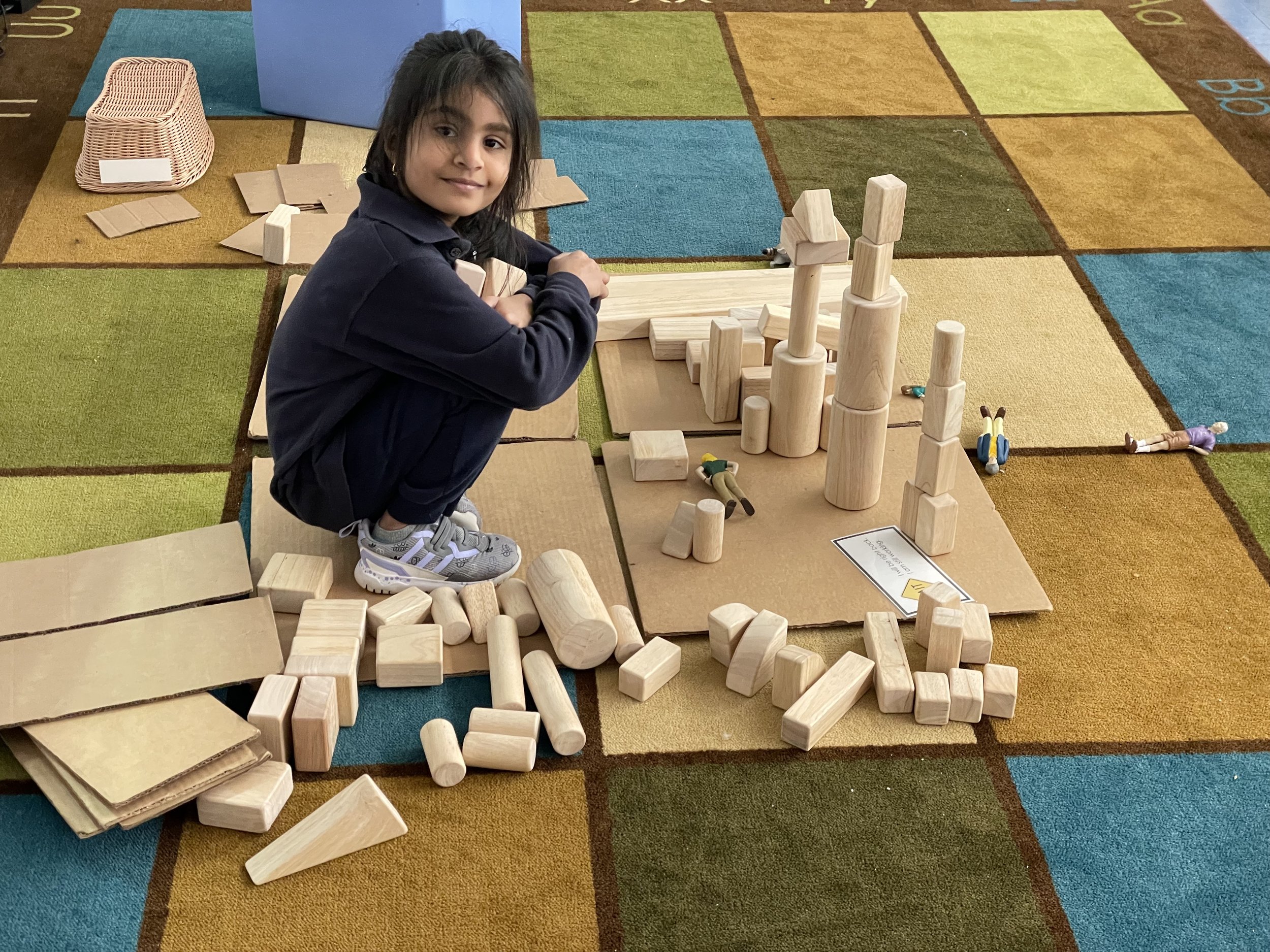Building with treasure boxes from The Beautiful Stuff Project at Prospect Hill Academy
Last week, we worked with teachers at Prospect Hill Academy, (PHA), in Somerville, Massachusetts. We have worked alongside the teachers and administrators at their Pre-Grade 3 campus since last June…primarily supporting the kindergarten teachers as they move to a more meaningful, project-based curriculum and more engaging classroom organization.
While we were at PHA, we met Marina Seevak, who is also working with the kindergarten teachers. Marina founded the Beautiful Stuff Project so that Pre-Grade 2 children might have access to open-ended materials and loose parts in an organized, efficient way. Marina believes that young children need to play with materials to learn. She and her organization work with schools primarily in the Boston area.
Treasure box exploration at PHA
We were intrigued to see Marina arrive with large handmade placemats as well as small rectangular cardboard treasure boxes full of curated recycled materials, one of each for each child. We watched as she introduced these simple materials and explained to the children that they would each have a box to open and to explore and play with in any way that they chose to.
We watched as 20 children opened their boxes and could not keep their hands off the materials! They started to explore and combine the materials, to role play, to talk to each other about what they were making, to transform shapes, to make patterns, to stack and build, and to tell stories.
(Dialogue below recorded by the lead teacher in the room.)
Michael: “This is a phone. Hello, can you hear me?” holding a small rectangle of plastic tile to one ear.
Bernardo: “Yes, I can hear you now,” holding a rectangular piece of foam to his ear.
Michael: “Good. I am ready now. You can call the bank and they will give you the money.”
Meanwhile, Bernardo is building a car, using all the materials from his treasure box. And Michael is building a bank.
Treasure box exploration at PHA
It was thrilling to see the children so engaged, so pleased, so full of energy and ideas, so interested in what other children were making, so seamlessly making one thing and then the next.
Marina told the children that they could put everything back into their box if they wanted to, give it a little shake, and then open it up again and see what would happen next.
She explained to us that the treasure boxes she brought to introduce the ideas and framework were the “classic” treasure boxes, well curated, with a variety of materials that children would be drawn to…glass “gemstones,” small tiles, cylinders of cardboard, foam squares, wooden pegs, large costume jewelry pearls, plastic caps…
Marina said that she and her colleagues had developed treasure boxes for exploring shadows, with a small flashlight in each one, boxes for exploring reflection and other themed treasure boxes. She said that she had never seen a child bored or a child who did not know what to do with these loose parts. She said, “They could do this for hours.”
I asked Marina if she knew Cathy Topal, author of the book, Beautiful Stuff with Lella Gandini. Also, Beautiful Stuff from Nature and several other books on materials. Marina said that she did not know Cathy. She does know her books, however, and is inspired by them. She shared with me that the process of collecting and organizing materials with families was often too much to ask of kindergarten teachers. She has found that the treasure boxes are an ideal solution. Thoughtfully curated, not too much, just enough and just enough variety of loose parts to get children going…I must say, watching the kindergarten children at PHA, I had to agree.
The treasure box experience is complementary to much of the work that we have been engaged in at PHA. Teachers have introduced blocks, dramatic play, a message/writing area, and art studio to their classrooms. These were not present when we began to work with PHA last summer. Now, the teachers and children are embracing play and integrated learning experiences where children use the reading, writing, and math skills that they are learning, as well as gain confidence as collaborators, thinkers, inventors, designers, and story-tellers. A goal in our work with teachers is that teachers will see their classrooms as treasure boxes.
Introducing dramatic play at PHA
An art studio at PHA
We highly recommend the books of Cathy Topal if you have not read them. This one is a favorite of mine. The books on Loose Parts by Miriam Beloglovsky and Lisa Daly, published by Red Leaf Press are also excellent. And check out the Beautiful Stuff Project. If you do not live in Boston, we are confident that you could learn from and organize a similar approach through a conversation and perhaps consultation with Marina Seevak.
Block building at PHA

